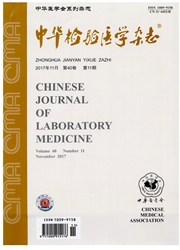

 中文摘要:
中文摘要:
目的优化试验条件,建立用于DNA甲基化组测定的限制性酶切扫描技术(RLGS)。方法选取冰冻胃癌组织及其周围非癌组织各2份,提取基因组大分子DNA(〉50000bp),用甲基化敏感的限制性内切酶Not Ⅰ等对DNA进行多重酶切、同位素”P标记、二维电泳、扫描分析,并且根据已有的位点DNA序列数据库,确定所得扫描图谱上位点所对应的序列信息。结果成功得到RLGS扫描图;有效点平均在1200个左右,标本质量较好的图谱平均可获得有效点1800个左右,与国外实验室的平均水平相当,经过比对可找出放射自显影信号强度减弱或增强的点,结果可重复,并能在Not Ⅰ-EcoR V克隆文库中找到这些点所对应的序列信息。结论成功建立了RLGS技术平台,并能够稳定工作。
 英文摘要:
英文摘要:
Objective To optimize the experiment conditions and set up the platform of restriction landmark genome scanning (RLGS) for detection of methylation. Methods High molecular weight genomic DNA ( 〉 50 000 bp)was extracted from frozen gastric cancer tissue and their corresponding normal samples and used for RLGS assay. The genome DNA was digested by methylation-sensitive restriction enzyme Not I , and labeled by radioisotope 32p, then separated by two-dimensional electrophoresis and autoradiography. Experimental conditions for each step were optimized step by step. DNA fragment sequences for the dots on scanning profile were identified according to the human RLGS database. Results RLGS assay was set up and used to get the RLGS profiles of the representative tested samples successfully. These profiles can display more than 1 200 available dots averagely, the profiles of high quality DNA sample can display more than 1 800 dots which is the average level at an excellent RLGS lab, discrepant dots which had weaken or enhanced signals and their sequence information were obtained. The result can be reproduced. Conclusion The RLGS assay is established, stabilized for detection of DNA methylation of tissue samples.
 同期刊论文项目
同期刊论文项目
 同项目期刊论文
同项目期刊论文
 期刊信息
期刊信息
